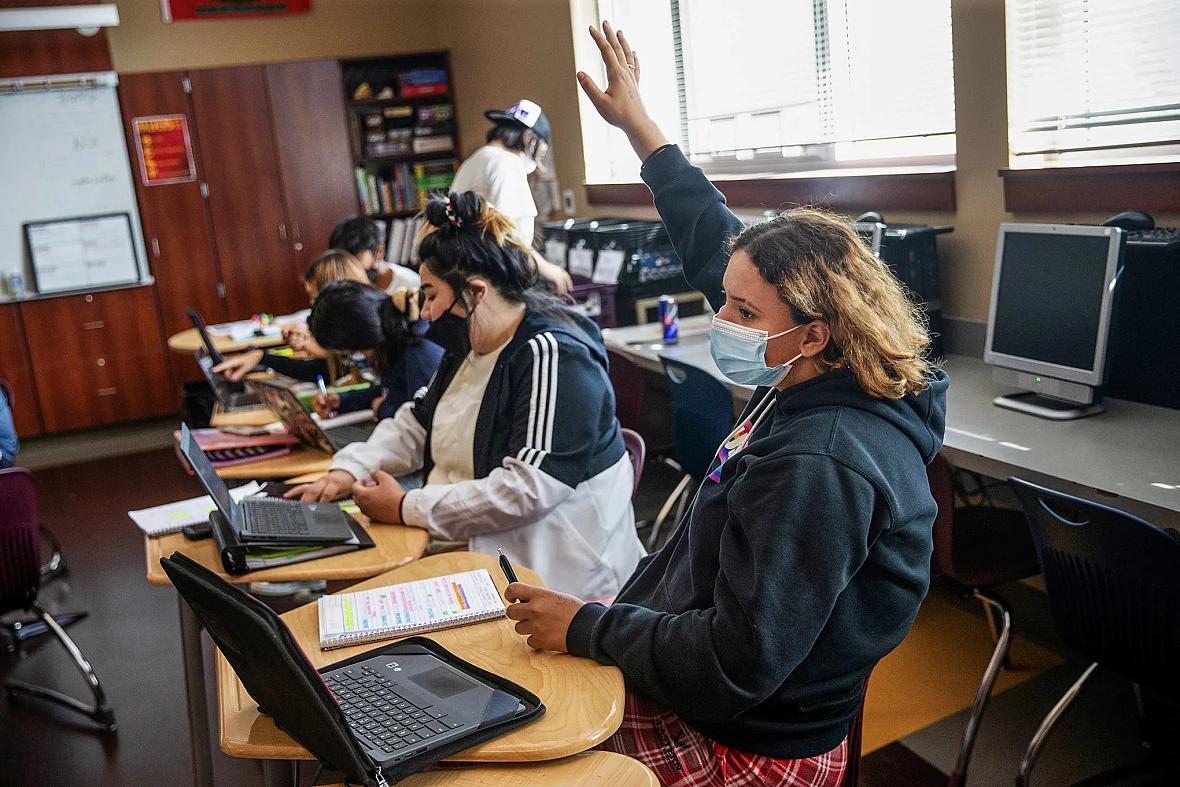Vast numbers of people in Washington are shut out of the digital world; will massive government funding solve the problem?
This article was produced as part of a project for the USC Annenberg Center for Health Journalism’s 2021 National Fellowship.
Other stories by Nina Shapiro include:

Sophomore Layla Flett raises her hand to ask about an assignment during class at Lake Roosevelt Jr./Sr High School. Flett was given a mobile Wi-Fi hotspot through a program run by the state Office of the Superintendent of Public Instruction. But patchy cell reception at home meant the hotspot didn't work well, and she fell behind on schoolwork.
(Amanda Snyder / The Seattle Times)
Colville tribal leaders aren't waiting on corporate America. When it comes to providing broadband, "nobody else is going to do it," said Damon Day, the Colville Reservation’s chief information officer and a member of the federal Native Nations Communications Task Force. "We learned that the hard way."
This article is an excerpt from an article originally published by The Seattle Times, produced as part of the USC Annenberg Center for Health Journalism’s 2021 National Fellowship. Read the entire article here.
So Colville leaders resolved to build their own system. Over the past year, using COVID relief funds and a radio frequency license the FCC granted to more than 150 tribes nationwide, Colville officials have been putting up towers for wireless broadband and handing out devices to receive signals at home.
They've made the service free, and have prioritized families with school kids, aiming to have most people online by 2026, according to Tiffany Circle, in the Colville Reservation's IT department.
At the same time, the tribes set about finishing a project they've been working on for years, putting in fiber along Highway 155 between Nespelem and Omak. What's more, Day said, "At some point, the tribes are going to stand up an internet service provider company."
The tribes were going to "swing for the fences," he said, requesting tens of millions more dollars in federal funding. As he was explaining that, talking by cellphone while driving on a remote road, the call dropped.
They are making progress, Day managed to convey before that, but there is a lot of work yet to do.
Read more here.
[This story was originally published by Native News Online.]

